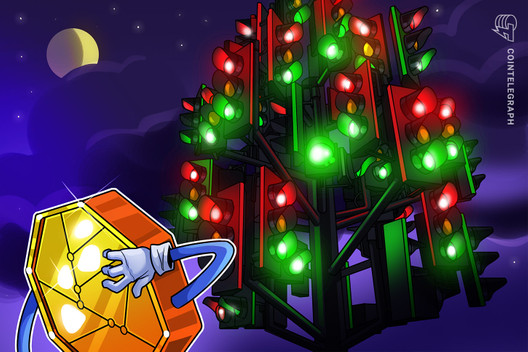
Um das Risiko einzuschränken, müssen Banken strengere Anforderungen erfüllen, wenn sie Krypto halten.

Finanzmittel Info + Krypto + Geld + Gold
Krypto minen, NFT minten, Gold schürfen und Geld drucken

Um das Risiko einzuschränken, müssen Banken strengere Anforderungen erfüllen, wenn sie Krypto halten.
After about two months of anguish, crypto exchange Digital Surge creditors can now smile after news that the exchange will pay back its creditors.
The news came after confirmation that the Australian exchange will receive a 1.25 Australian dollars bailout from an associate business. This was after the creditors approved a long-term recovery plan for the company.
The woes of the Digital Surge crypto exchange started after the collapse of the FTX crypto exchange in November. In total Digital Surge lost about $33 million that it held on FTX.
The Australian exchange immediately swung into action by freezing the digital assets of its more than 22,000 customers. The assets remain frozen to date.
As the situation deteriorated, the exchange passed into voluntary administration (management handed over control to licensed insolvency practitioners to independently assess its financial situation) in December 2022. KordaMentha, a Melbourne-based investment firm, was the licensed insolvency practitioner that Digital Surge appointed for this process.
In a rare turn of events, the Digital Surge cryptocurrency is not going to become insolvent after reports that the exchange was going to receive a loan of 1.25 Australian dollars from Digico, which is an associate business. This means the exchange is going to survive the devastating crypto contagion that wiped out $1 trillion across the industry and resulted in several major crypto companies including Genesis filing for bankruptcy.
Following the developments, Digital Surge will pay back its creditors with customers who had $250 in their accounts being repaid in full immediately with the rest receiving 45% of their balance in 5 years.
The post Crypto exchange Digital Surge to pay back creditors after bailout appeared first on CoinJournal.

Die politischen Entscheidungsträger in Großbritannien sind gespalten, ob der Verkauf, die Vermarktung und die Distribution von Derivaten und ETNs in Verbindung mit Kryptowährungen für Privatanleger verboten werden sollten.

Nach der jüngsten Kletterpartie ist der Bitcoin-Kurs nun unentschlossen, aber die Stärke des Aufschwungs könnte einen neuen Aufwärtstrend bedingen.
German sports car maker Porsche has announced its stopping the minting of its non-fungible token (NFT) collection, less than two days after opening it for the public on 23 January.
According to an update the car manufacturer posted on Twitter on Tuesday, the decision to halt the inaugural mint follows the response of the community. Per the German-based company, the negative feedback it received from holders was enough for it to cut the supply of the NFTs and halt the mint.
“Our holders have spoken. We’re going to cut our supply and stop the mint to move forward with creating the best experience for an exclusive community. More info in the next hours,” the Porsche NFT project team noted on Twitter.
The NFT collection offered a digital replica of the car maker’s iconic 911 model, with the 7,500 NFTs on offer priced at 0.911 ETH each. At the current price of Ethereum, that was roughly $1,490 per item – a price heavily criticized as being too expensive.
Really sad. No community. No comms. No value. Glad our community hasn’t fallen for it. Big brands should take note. This is a valuable lesson for them. Extracting value not gonna cut it.
— Staś May (@haymaker_studio) January 24, 2023
The company’s Web3 strategy has been criticized as largely underwhelming across the community, and many see this as another example of how much more traditional companies need to learn about Web3 before launching projects.
While Porsche noted the mint was halting, it provided an update that noted it would remain open until Wednesday, 25 January at 6 am UTC-5.
At the time of writing, of the total supply provided, 5,639 NFTs are open for minting. The FAQ page shows the mint supports three wallets – MetaMask, Coinbase and WalletConnect.
The post Porsche halts NFT mint amid negative feedback from community appeared first on CoinJournal.